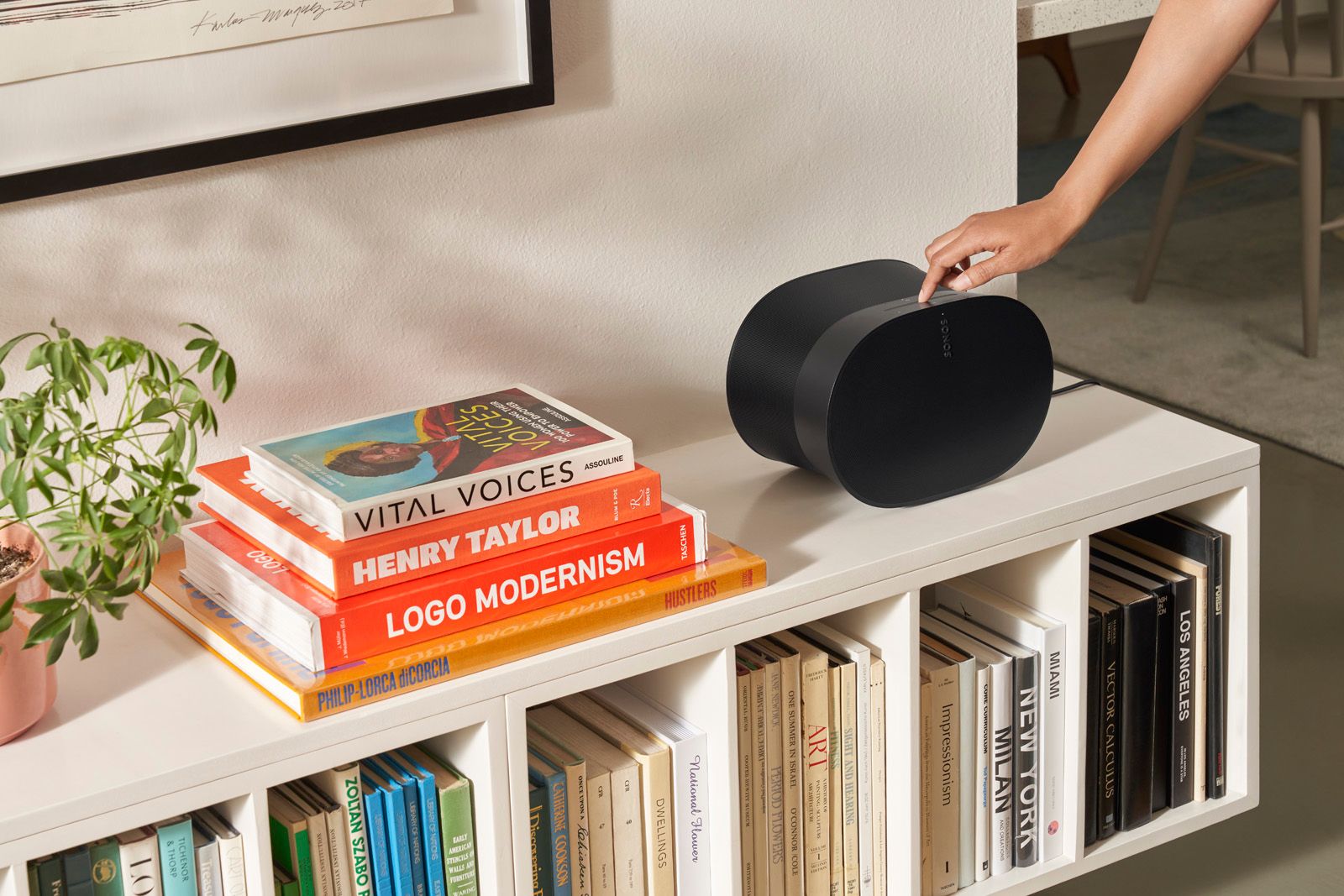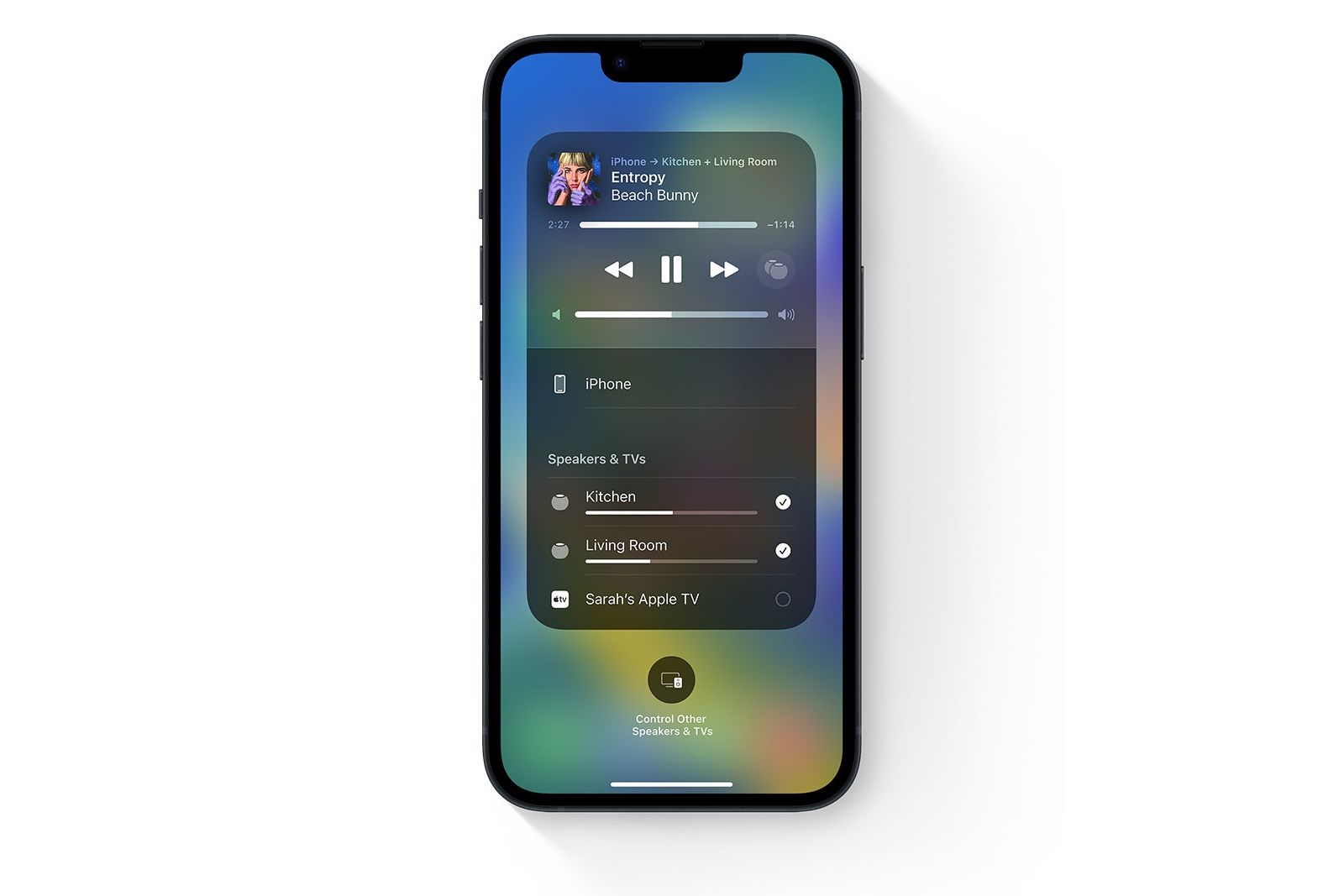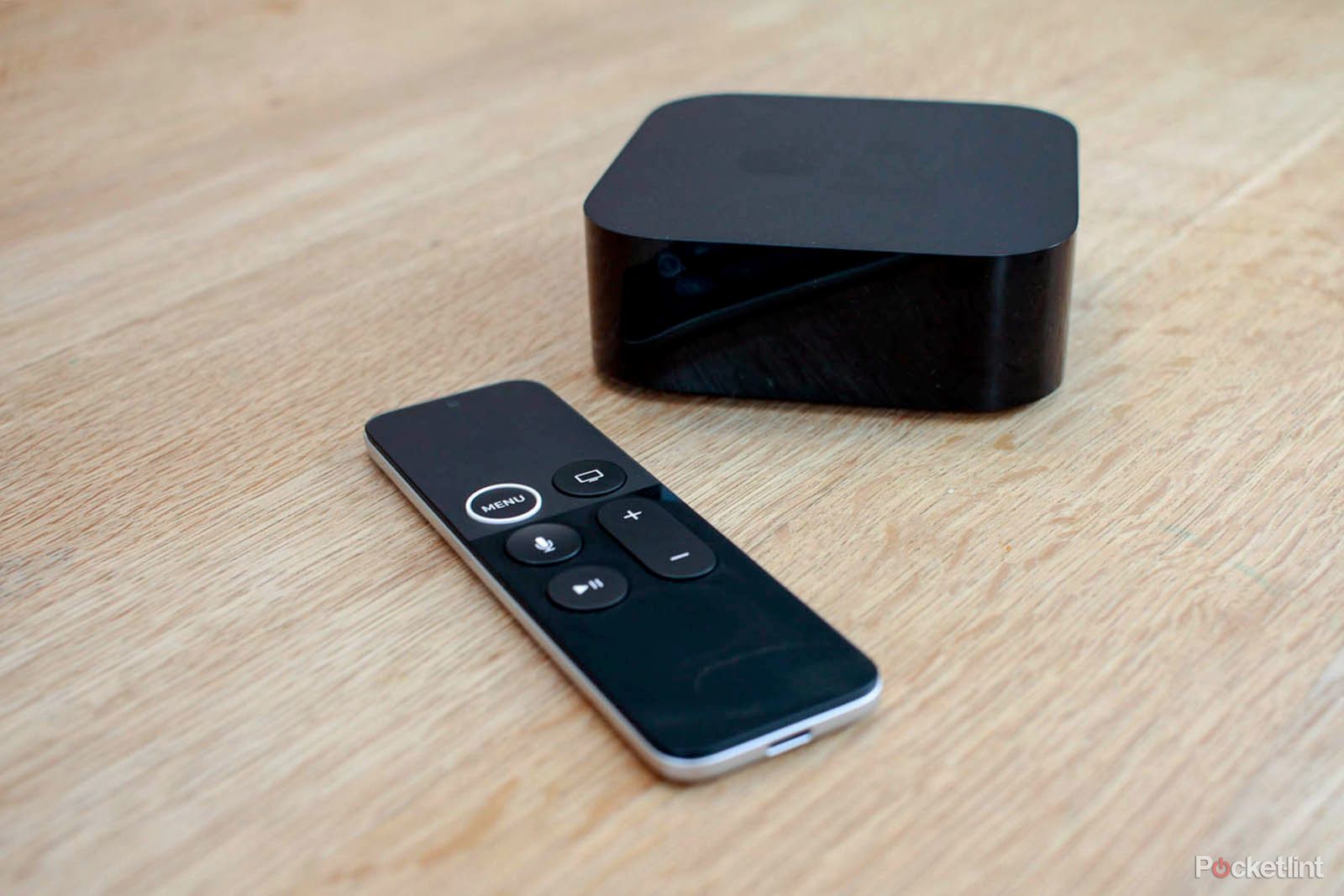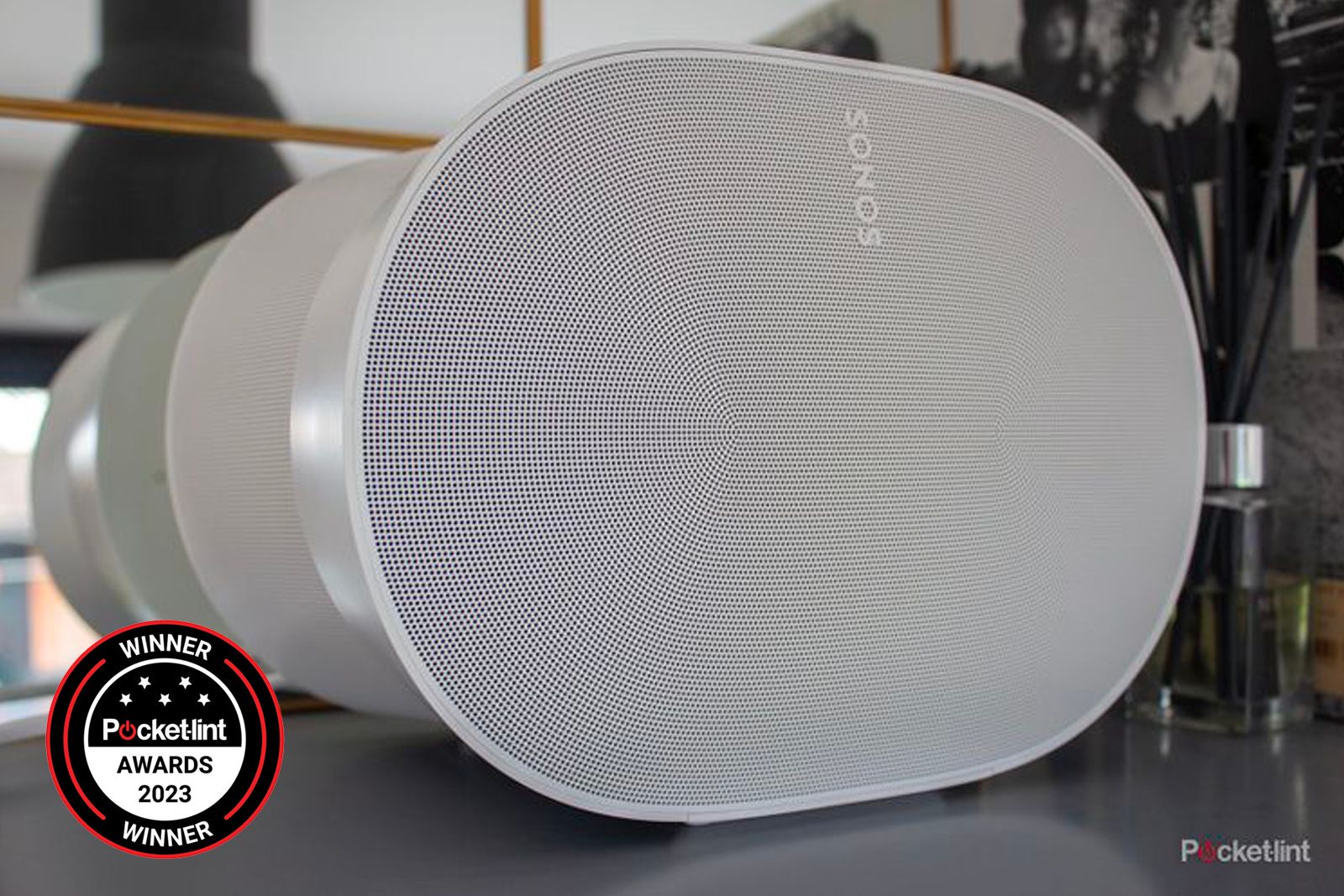AirPlay, Apple’s proprietary wireless streaming protocol, has been around a lot longer than you might expect. Indeed, AirTunes, the earliest incarnation of AirPlay, was launched in 2004, three years before the first iPhone even hit the market.
AirPlay as we know it was introduced in 2010 in iOS 4, and remained unchanged for several years, before finally receiving a major update in the form of AirPlay 2 in 2017.
Best AirPlay receivers: Simple streaming solutions
Easily integrate Apple’s wireless audio solution.
Apple AirPlay has always allowed users to instantly share audio, video, or images between your iPhone, iPad, Mac, Apple TV, or another AirPlay-enabled device. With AirPlay 2, more features have been added, alongside more comprehensive controls.
Apple’s HomePod and HomePod mini speakers also use the protocol, and with AirPlay 2, it’s possible to enjoy multi-room audio, or even to stream different music to different speakers.
Here’s all you need to know about the original AirPlay and how AirPlay 2 improves it.
Apple AirPlay 2 vs AirPlay: What are the differences?
In a nutshell…
- AirPlay doesn’t offer multi-room audio. AirPlay 2 does.
- AirPlay lets you stream from any Apple device to your speakers or TV.
- AirPlay 2 lets you play from speakers over Wi-Fi, and it’ll stay in sync.
- AirPlay 2 allows you to play different songs in different rooms with multiple HomePods or HomePod Minis.
AirPlay, which debuted in 2010 as an evolution of AirTunes, is a protocol developed by Apple that allows wireless streaming from Apple devices over Wi-Fi. Apple has also since licensed AirPlay to manufacturers for them to use in their products in order to be compatible with AirPlay. In 2017, Apple announced AirPlay 2, an update to the protocol, and it brought additional features, including support for multi-room audio.
Compared to Bluetooth audio streaming, AirPlay can stream across much larger distances, limited only by the extent of the Wi-Fi network being used. AirPlay also takes advantage of the wider bandwidth that Wi-Fi provides, allowing for higher-quality streams.
As for the AirPlay 2 update, it adds the ability to stream music to multiple audio devices simultaneously. You could use it to cue a song on your iPhone and play it in multiple rooms around the house at the same time, or choose which AirPlay speaker to stream to in your house.
You can even stream different songs to different speakers simultaneously.
AirPlay 2 was announced before the original HomePod was even released, but AirPlay 2 unlocks many features in the speaker and its bite-sized companion, the HomePod Mini, including multi-room and stereo pairing (the ability to use separate HomePods as left and right speakers). It will also let you ask Siri to play music in a specific room or throughout the house. AirPlay 2 is also “built throughout iOS”, so you can play music to select speakers right from Apple Music or the Home app.
Any third-party apps using the AirPlay 2 audio toolkit will let you do the same thing. Another cool AirPlay 2 feature is the ability to create a shared “up next” playlist, or multi-user playlists right within Apple Music. So, with AirPlay 2 and Apple Music, if you’re streaming a playlist from your iPhone, your friends can add their own music to the mix directly from their own iPhones. You even take an incoming call or play a game on your device without interrupting the music, which wasn’t possible with the original AirPlay.
Apple
Apple AirPlay 2 vs AirPlay: How do you control it?
- AirPlay 2 can be accessed from the Control Center, Home app, or in-app controls.
- AirPlay 2 is also baked into Apple TV and MacOS.
The original AirPlay worked fine but had some limitations. AirPlay 2, on the other hand, is built throughout iOS. You can pick a song and control the volume of your AirPlay 2‑enabled speaker from the Control Center, the Music app, the Home app, the Lock screen, or via in‑app controls on your Apple devices. You can also ask Siri to play songs, something that wasn’t possible with the original AirPlay. All you need to do is ask for the song and room, and the rest happens like magic. You’re not restricted to using Siri with the HomePod either, as Siri commands work with other third-party speakers as well.
If you have one of the more recent Apple TVs, you can use it to send audio to speakers around your home, rather than just coming from your iPhone or iPad. Any supported speakers that are connected to the Apple TV, be it a soundbar or speaker system, will become AirPlay 2 speakers. You can also send audio from your iPhone or Mac to your Apple TV and your other speakers simultaneously.
Speaker differences
One key difference between AirPlay and AirPlay 2 is that you can also ask Siri to play songs on different speakers, though only Apple Music subscribers can take advantage of this function. All you need to do is ask Siri to play a song on a specific speaker and then ask Siri to play a different song on a different speaker. Both songs will play simultaneously, and you can control both streams from your iPhone. AirPlay 2 can also be used with other HomeKit devices to create scenes, so you can play music and set the lighting at the same time, for example.
When you play music from your iOS device using AirPlay 2, you can select which speakers the audio plays through, and control the individual volumes of those speakers. All you need to do is open the Control Center by swiping down from the top-right of the iPhone Home screen.
Which Apple devices support AirPlay 2?
- AirPlay works on all older iPhones, iPads, Macs, and Apple TVs.
- AirPlay 2 is compatible with recent iPhones, iPads, and Mac computers.
- AirPlay also works with devices as old as the Apple iPod Touch 2015 and the original HomePod and HomePod Mini.
AirPlay works on all older iPhones, iPads, Macs, and Apple TVs.
You’ll need to be running iOS 4.2 or higher. AirPlay 2 is compatible with the more recent iPhones, iPads, and Mac computers, including iPhones with iOS 11.4 or later, Apple TVs running tvOS 11.4 or later, and Macs running macOS Cataline or later.
AirPlay 2 works on iPhones from the iPhone 5S and onward, the 2017 iPad or newer, any iPad Air, any iPad Pro, and the iPad Mini 2 or later. It also works on the Apple TV 4K or Apple TV HD, the Apple iPod Touch 2015 (sixth generation), and both the HomePod and HomePod Mini.
Which third-party devices offer AirPlay 2?
- AirPlay is supported on several older speakers and soundbars.
- AirPlay 2 has been supported by many brands as well.
- Many Sonos speakers offer AirPlay 2.
AirPlay was supported on several older speakers and soundbars from third-party manufacturers. AirPlay 2 was more restricted at launch but is now widely adopted. Brands offering support include Sonos, Denon and Marantz, Bose, Bang and Olufsen, Beats, Naim, Devialet, Dynaudio, Polk, McIntosh, Bowers & Wilkins, Libratone, Definitive Technology, and Bluesound, among others.

Best Sonos speakers and soundbars: Expert tested and reviewed
From the portable Sonos Roam to the impressive Beam Soundar, this is a sound snob’s guide to the best Sonos speakers.
Not every product from these brands is compatible, however. For instance, newer Sonos speakers, including the Sonos Era 100, Era 300, Arc, Sonos One, Move, and Roam support AirPlay 2. However, older Sonos players like the Play:3 and Play:1 don’t. Meanwhile, some manufacturers, like Naim and Libratone, simply run a software update on their speakers to benefit from AirPlay 2 features.
You can find a full list of AirPlay-enabled speakers on Apple’s website.
Apple AirPlay 2 vs AirPlay: Which should you use?
Following the update, AirPlay 2 opens up a whole world of multi-room streaming capabilities that were previously not available on the iPhone or iPad, such as controlling multiple speakers, which, up until AirPlay 2 launched, you were only able to do on the MacBook. Controlling playback with AirPlay 2 is almost much easier thanks the integration of AirPlay from iOS 11.4 onwards. Unless you own a pre-2010 iPhone or Mac, you can take advantage of the additional features of AirPlay 2.
It’s not just iPhone owners that benefit though, as AirPlay 2 also brings with it multi-room playback for the HomePod and HomePod Mini.
Trending Products

Cooler Master MasterBox Q300L Micro-ATX Tower with Magnetic Design Dust Filter, Transparent Acrylic Side Panel, Adjustable I/O & Fully Ventilated Airflow, Black (MCB-Q300L-KANN-S00)

ASUS TUF Gaming GT301 ZAKU II Edition ATX mid-Tower Compact case with Tempered Glass Side Panel, Honeycomb Front Panel, 120mm Aura Addressable RGB Fan, Headphone Hanger,360mm Radiator, Gundam Edition

ASUS TUF Gaming GT501 Mid-Tower Computer Case for up to EATX Motherboards with USB 3.0 Front Panel Cases GT501/GRY/WITH Handle

be quiet! Pure Base 500DX ATX Mid Tower PC case | ARGB | 3 Pre-Installed Pure Wings 2 Fans | Tempered Glass Window | Black | BGW37

ASUS ROG Strix Helios GX601 White Edition RGB Mid-Tower Computer Case for ATX/EATX Motherboards with tempered glass, aluminum frame, GPU braces, 420mm radiator support and Aura Sync













